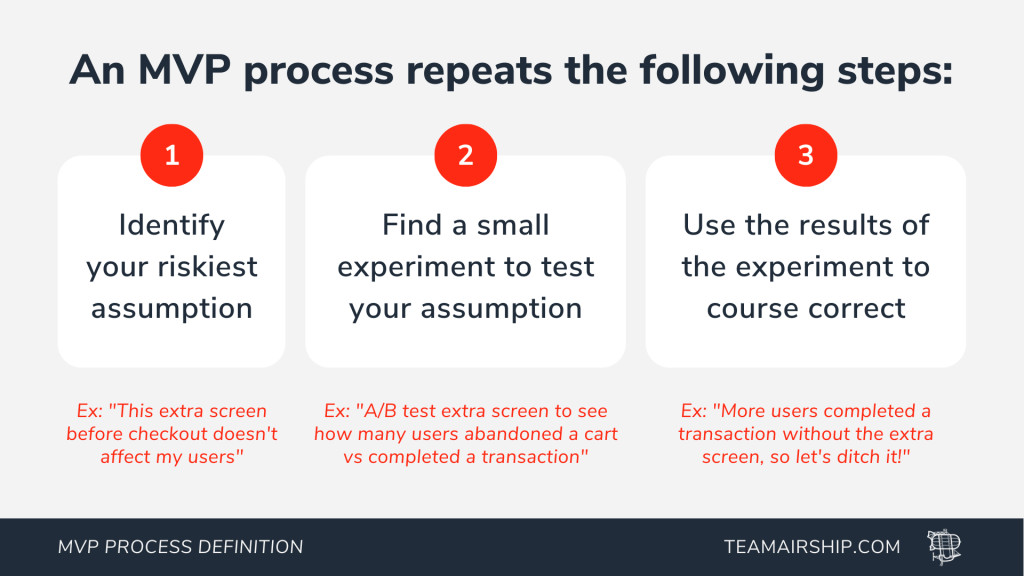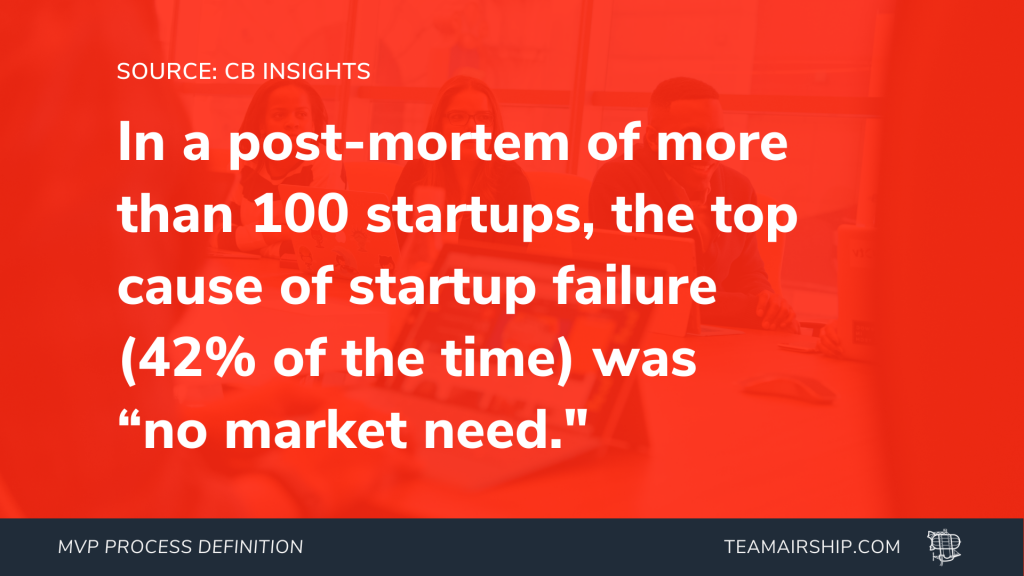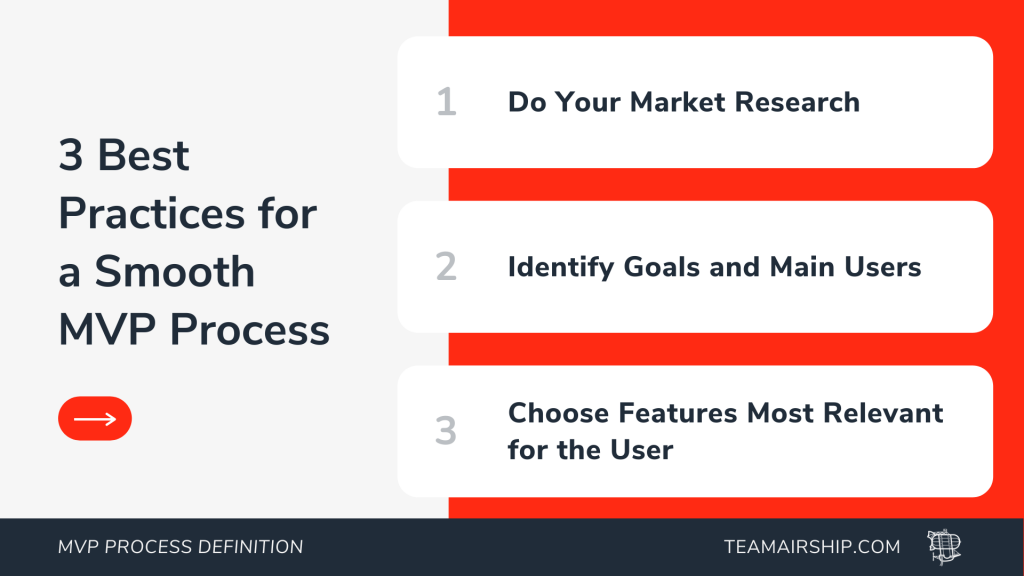So you understand the definition of a minimum viable product in software development. Now, you’re ready to move on to the next step of creating your MVP… so what’s next?
For entrepreneurs looking to build an MVP application, they must understand what is the MVP process in software development in order to quickly build and assess their product in the market.
In fact, the more you know about the MVP process and the more you work with a professional partner to develop your MVP, the better. Why? Because everyone and their aunt (or allergist) is now investing in startups.
And because we know how busy you are gathering feedback from users (hint hint), we've also provided a brief presentation overview at the bottom.

What is the MVP process in software development?
An MVP process is one that you repeat over and over again: Identify your riskiest assumption, find a small experiment to test your assumption, and use the results of the experiment to course correct.
When you build a product, you make many assumptions. You assume you know what users are looking for, what they're not looking for, how the design should work, what marketing strategy to use, what architecture will work most efficiently, which monetization strategy will make it sustainable, and which laws and regulations you have to comply with. No matter how good you are, some of your assumptions will be wrong. The problem is, you don't know which ones.

In a post-mortem of more than 100 startups, CB Insights found that the top cause of startup failure (42% of the time) was “no market need." Nearly half of these startups spent months or even years building a product before they found out that they were wrong in their most central assumption: that someone was interested in that product in the first place.
The only way to test your assumptions is to put your product in front of real users as quickly as possible. And when you do, you will often find that you have to go back to the drawing board. In fact, you’ll have to go back to the drawing board not just once, but over and over again.

3 Best Practices to Help Your MVP Process
After years of designing, building, and maintaining products from a variety of stages, we’ve identified 3 tips to help anyone start off smoothly as they begin the MVP process.
- Do Your Market Research
- Identify Goals and Main Users
- Choose Features Most Relevant for the User

Do Your Market Research
No matter how innovative and interesting your idea maybe, you need to do market research to assess demand and competitors to avoid significant financial and time losses.
Familiarize yourself with your target audience before you get to the product development stage.
Market research helps you to identify your ideal customers, what makes your idea unique and viable, what problems it may solve, and how to make your product meet your customer’s needs, before your even start to build an MVP.
Keep in mind that the key to successfully building an MVP is showing your target audience the value that your product will provide.
So during market research, it's crucial to decide how the user can benefit and how can you introduce the value to the customers.
Identify Goals and Main Users
Establish clear and specific metrics you will use to define success is crucial. If your attention is focused on the wrong metrics or if you decide to change years from now, you could miss key indicators of serious issues or opportunities.
A few metrics you can consider using include the following:
- The number of downloads in a certain period of time
- A total number of downloads
- Review and feedback score
- The time that users spend on the app
- Anything else that helps you see if your MVP is meeting your customer’s needs or if it needs adjustment
Facts and statistics can provide you with a realistic viewpoint and helps identify clear goals and what success would look like.
Choose Features Most Relevant for the User
Once you understand what value you provide to your users, your business goals, and how you combine these two points, it’s time to decide what your product will actually look like.
Think like the final user - thinking through navigation and product workflows like a customer will provide you with information based on user behavior and help you identify the sequence of actions that will solve the user's problem.
In addition to building navigation workflows, we also encourage everyone to learn about and build User Stories. User stories also include thoughts, feelings, and decisions that result in the user taking action. Stories (or some call these journeys) are a visual representation of the customer’s relationship with your product.
Remember to take into consideration what your users are thinking and feeling while using your product as it will considerably affect their decision-making process. You can also use this information to redirect them from one feature to another within the product.
To understand your user's journey answer the questions that identify users and their personality, decision-making process, the final goal, and a series of actions that users need to take to meet this goal.
If you define several types of potential customers, focus on the one that you can most quickly provide the most value. That will save you time when you analyze the test results.
Conclusion
Making a Minimum Viable Product (MVP) has proven itself time and time again to be a beneficial step in the software development process.
It helps organizations test the waters before going all-in and investing in ideas that may not prove viable or need an alteration in order to meet market needs.
MVP creates a foundation for information-driven business decisions and can also be used to attract investors. If you’re interested in working with a technology partner experienced with developing MVPs, contact us to discuss your project and how we can help.


